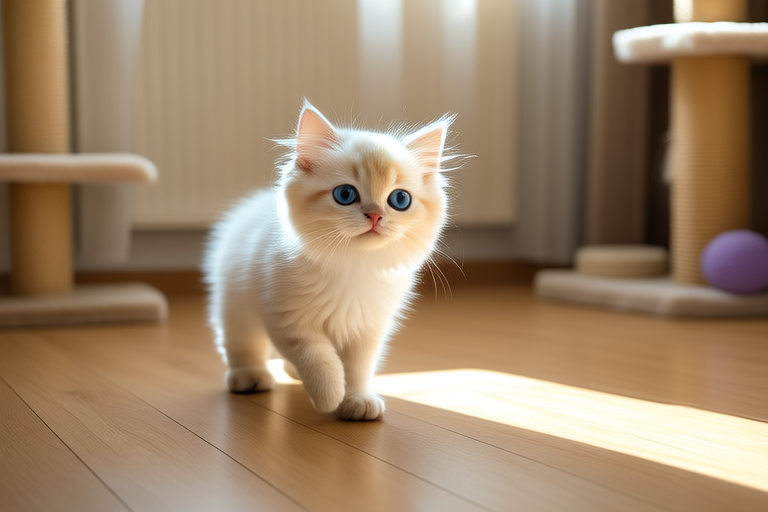
Raising a Ragdoll Cat: Tips for New Owners from Experienced Breeders
Welcome to the world of Ragdoll cats! Known for their striking blue eyes, plush coats, and affectionate nature, Ragdolls have captured the hearts of many cat lovers. These medium to large-sized felines are famous for their docile temperament and tendency to go limp like a rag doll when picked up, hence their name. If you’re a new owner or considering adopting a Ragdoll, this guide will provide you with invaluable tips from experienced breeders to help you raise a happy and healthy Ragdoll cat.
Introduction: Unique Traits of Ragdoll Cats
Ragdoll cats are renowned for their gentle demeanor and intelligence. They often form strong bonds with their owners and enjoy being part of family activities. Their semi-longhair coat requires regular grooming to maintain its lustrous appearance. Ragdolls come in various colors and patterns, adding to their appeal. Understanding these traits can help you provide the best care possible for your new furry companion.
Diet: Feeding Your Ragdoll Cat
Proper nutrition is crucial for the health and well-being of your Ragdoll cat. High-quality commercial cat food that meets the nutritional standards set by organizations like AAFCO (Association of American Feed Control Officials) is recommended. Choose food that suits your cat’s age, weight, and activity level. Wet food can be beneficial for hydration, especially if your cat doesn’t drink enough water. Always provide fresh, clean water and monitor your cat’s eating habits. Avoid feeding table scraps as they may contain ingredients harmful to cats.
Grooming: Maintaining Your Ragdoll’s Coat
Ragdolls have a semi-longhair coat that requires regular grooming to prevent matting and hairballs. Brush your cat at least twice a week, more frequently during shedding seasons. Use a slicker brush or a metal comb to remove loose fur and knots gently. Bathing is generally unnecessary unless your cat gets particularly dirty or has skin issues. Regular brushing also helps distribute natural oils throughout the coat, keeping it shiny and healthy. Additionally, check your cat’s ears weekly for signs of infection or wax buildup and clean them with a cotton ball and pet-safe ear cleaner if necessary.
Exercise: Keeping Your Ragdoll Active
Ragdolls are relatively inactive compared to some other breeds, but they still need regular exercise to stay healthy and engaged. Interactive toys such as feather wands or laser pointers can stimulate their minds and bodies. Puzzle feeders that dispense treats can encourage mental stimulation while satisfying hunger. Providing climbing trees or shelves allows your cat to explore and climb, which is essential for physical fitness. Encouraging playtime daily helps prevent obesity and keeps your Ragdoll mentally stimulated.
Healthcare: Ensuring Your Ragdoll’s Well-being
Regular veterinary check-ups are vital for maintaining your Ragdoll’s health. Schedule annual visits for vaccinations, dental exams, and general health assessments. Spaying or neutering your cat is important for preventing certain diseases and unwanted litters. Keep an eye out for signs of illness, such as changes in appetite, energy levels, or litter box habits. Early detection of health issues can lead to better outcomes. Vaccinations and preventive treatments for parasites are also crucial.
Socialization and Training: Building a Strong Bond
Socializing your Ragdoll from a young age helps them become comfortable around people and other animals. Introduce them to different environments, sounds, and smells gradually. Positive reinforcement training can teach your cat basic commands and improve their behavior. Reward good behavior with treats or praise, and avoid punishing bad behavior as it can lead to fear and aggression. Training sessions should be short and fun to keep your cat engaged and motivated.
Creating a Safe and Enriching Environment
Providing a safe and stimulating environment is essential for your Ragdoll’s happiness. Ensure your home is free from hazards such as toxic plants, small objects that could be swallowed, and open windows or doors that pose escape risks. Install secure cat flaps if you allow your cat outside, and consider supervised outdoor access. Cat-proof your house by covering electrical cords, securing drapes, and blocking off dangerous areas. Providing scratching posts, climbing structures, and cozy hiding spots can help satisfy your cat’s natural instincts.
Common Challenges and Solutions
New owners often face challenges when raising a Ragdoll. One common issue is litter box problems, which can stem from stress, health issues, or dissatisfaction with the litter box setup. To address this, try different types of litter and boxes, ensure the box is easily accessible, and clean it regularly. Another challenge is managing shedding, which can be minimized through regular grooming. Some owners struggle with maintaining a balanced diet, so consulting with a veterinarian can provide tailored advice. Lastly, addressing behavioral issues early on can prevent them from becoming ingrained. Experienced breeders suggest seeking professional help if needed.
In conclusion, raising a Ragdoll cat is a rewarding experience filled with love and companionship. By following these tips from experienced breeders, you can ensure your Ragdoll leads a healthy, happy life. Remember that every cat is unique, so adapt these guidelines to suit your individual pet’s needs. With patience, care, and attention, you’ll build a strong bond with your Ragdoll that will last a lifetime.






